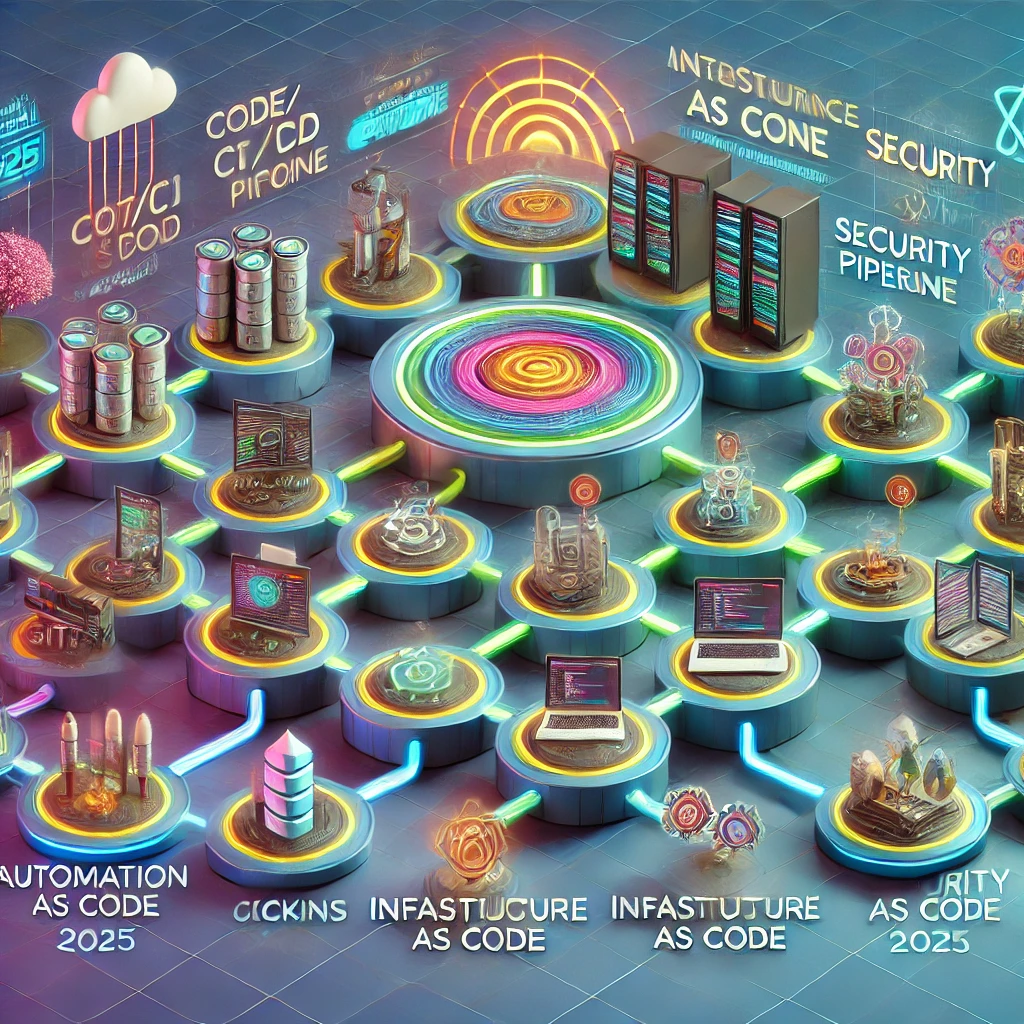Introduction: Unveiling the Secrets of End-to-End DevOps Deployment
Introduction: Unveiling the Secrets of End-to-End DevOps Deployment :-
What is DevOps?
- DevOps is a set of practices, tools, and a cultural philosophy that automates and integrates the processes between software development and IT teams. It emphasizes collaboration, communication, and continuous improvement to shorten the systems development life cycle and provide continuous delivery with high software quality.
- Think of it as a bridge connecting the often-siloed worlds of development and operations. Instead of developers tossing code over the wall to operations, DevOps fosters a collaborative environment where both teams work together throughout the entire software lifecycle. This leads to faster releases, increased efficiency, and improved product quality.
Why End-to-End DevOps Matters :-
- End-to-end DevOps isn't just about individual processes; it's about the entire journey. It ensures seamless integration between every stage, from initial planning to ongoing monitoring and feedback. This holistic approach minimizes bottlenecks, reduces errors, and significantly accelerates deployment.
- In today's fast-paced digital world, speed and efficiency are paramount. End-to-end DevOps empowers businesses to respond quickly to market demands, adapt to changing customer needs, and stay ahead of the competition. It's the key to unlocking the full potential of agile development and continuous delivery.
Phase 1: Planning and Design
Defining Goals and Objectives :-
- Before diving into the technical aspects, a clear understanding of project goals is crucial. What are you trying to achieve with this deployment? What are the key performance indicators (KPIs) you'll use to measure success? This initial planning phase sets the foundation for a smooth and efficient deployment process.
- Clearly defining your objectives involves identifying target users, defining functionalities, and setting realistic timelines. Without this roadmap, your DevOps journey will lack direction and may encounter unforeseen roadblocks. A well-defined plan ensures everyone is aligned and working towards the same objectives. Consider using tools like Jira or Trello to manage and track progress.
Choosing the Right Tools :-
- The success of your DevOps deployment hinges on selecting the right tools. From version control systems to continuous integration/continuous delivery (CI/CD) pipelines, the right tools can streamline your workflow and automate repetitive tasks. However, the wrong tools can create bottlenecks and increase complexity.
- Consider factors like scalability, integration with existing systems, and the expertise of your team when choosing tools. Research different options and evaluate their features based on your specific requirements. Popular choices include Git for version control, Jenkins or GitLab CI for CI/CD, and Docker for containerization. Don't be afraid to experiment and iterate on your toolset as your needs evolve.
Infrastructure as Code (IaC) :-
- IaC is a crucial element of modern DevOps. It involves managing and provisioning infrastructure through code, rather than manual processes. This approach allows for automation, reproducibility, and version control of your infrastructure, ensuring consistency and reducing errors.
- Tools like Terraform and Ansible allow you to define your infrastructure as code, automating the creation, configuration, and management of servers, networks, and other resources. This eliminates manual configuration, reducing the risk of human error and enabling efficient scaling of your infrastructure. IaC also promotes consistency and repeatability across different environments (development, testing, production).
Phase 2: Development and Testing
Version Control with Git :-
- Git is the cornerstone of modern software development, providing a robust system for tracking changes to code. It allows multiple developers to collaborate seamlessly, managing different versions of the codebase and merging changes efficiently.
- Using Git best practices, such as branching strategies and frequent commits, is vital for maintaining a clean and manageable codebase. This allows for easy rollback to previous versions if errors arise and facilitates collaborative development. Understanding Git workflows, such as Gitflow, is essential for efficient team collaboration.
Continuous Integration (CI) :-
- CI is the practice of regularly integrating code changes into a central repository. Each integration is then verified by an automated build and test process. This early and frequent detection of integration issues minimizes the risk of large-scale problems later in the development cycle.
- CI systems, such as Jenkins or GitLab CI, automatically build and test code whenever changes are pushed to the repository. This provides immediate feedback to developers, enabling quick identification and resolution of errors. The automation of this process significantly accelerates the development cycle and improves the overall quality of the software.
Continuous Testing :-
- Continuous testing involves automating the testing process throughout the software development lifecycle. This includes unit tests, integration tests, and system tests, all performed automatically as part of the CI/CD pipeline.
- Automated testing ensures consistent and thorough testing of the application, catching bugs early and reducing the risk of releasing faulty software. This approach includes using various testing frameworks and tools, ensuring code quality and reliability. Continuous testing is critical for delivering high-quality software.
Phase 3: Deployment and Monitoring
Continuous Delivery (CD) :-
- CD extends CI by automating the release process, making it possible to deploy new code changes to production quickly and reliably. It aims to reduce the time and effort required to release new software versions.
- Tools like Jenkins, GitLab CI, or CircleCI can automate the deployment process, ensuring consistent and repeatable deployments. This includes automating tasks like code deployment, configuration management, and infrastructure provisioning. CD enables frequent releases, allowing for quicker feedback and adaptation to changing requirements.
Deployment Strategies :-
- Choosing the right deployment strategy is crucial for minimizing downtime and ensuring a smooth transition. Strategies like blue/green deployments, canary deployments, and rolling updates each have their strengths and weaknesses, depending on the specific application and infrastructure.
- Blue/green deployments involve running two identical environments, one live (blue) and one staging (green). New code is deployed to the staging environment, then traffic is switched to the new environment once testing is complete. Canary deployments gradually roll out new code to a subset of users before a full release. Rolling updates deploy new code incrementally, minimizing downtime and allowing for quick rollback if issues arise.
Infrastructure Monitoring :-
- Monitoring the infrastructure is essential for ensuring the stability and performance of your application. Tools like Prometheus, Grafana, or Datadog provide real-time insights into the health and performance of your servers, networks, and other infrastructure components.
- Monitoring allows for proactive identification and resolution of infrastructure issues, preventing potential outages and performance degradation. By setting up alerts for critical metrics, you can ensure quick responses to potential problems. Detailed dashboards provide a clear overview of your infrastructure's health and performance, allowing for informed decision-making.
Application Performance Monitoring (APM) :-
- APM tools, such as New Relic or Dynatrace, provide insights into the performance of your application itself. They track things like response times, error rates, and resource usage, helping you identify performance bottlenecks and optimize your application's performance.
- APM helps pinpoint areas of your application that need improvement, enabling you to enhance user experience and optimize resource utilization. This includes monitoring transaction traces, identifying slow database queries, and detecting memory leaks. Understanding your application's performance is critical for delivering a high-quality user experience.
Phase 4: Feedback and Optimization
Collecting Feedback :-
- Continuous feedback is vital for continuous improvement. This involves gathering feedback from users, developers, and operations teams to identify areas for improvement in the deployment process.
- Feedback can be collected through various channels, such as user surveys, bug reports, and performance metrics. Actively soliciting feedback from all stakeholders ensures that the deployment process is constantly evolving and meeting the needs of everyone involved.
Analyzing Metrics :-
- Analyzing metrics such as deployment frequency, lead time, and mean time to recovery (MTTR) provides valuable insights into the effectiveness of your DevOps process. This data-driven approach helps identify bottlenecks and areas for improvement.
- Regularly analyzing metrics helps track progress and identify areas where improvements can be made. By visualizing metrics using dashboards, you can gain a clear understanding of the overall effectiveness of your DevOps implementation. Data-driven decision-making ensures continuous optimization of the deployment process.
Iterative Improvements :-
- DevOps is an iterative process. Based on feedback and metrics analysis, continuously improve your processes, tools, and infrastructure. This continuous improvement cycle is crucial for maintaining efficiency and delivering high-quality software.
- Embracing a culture of continuous learning and improvement is critical for ongoing success. This includes regularly reviewing and refining your processes, adopting new tools and technologies, and adapting to evolving needs. Continuous improvement ensures that your DevOps implementation remains effective and efficient over time.
Conclusion: Embracing the DevOps Journey :-
- End-to-end DevOps deployment is more than just a set of tools and processes; it's a cultural shift towards collaboration, automation, and continuous improvement. By embracing this holistic approach, organizations can significantly accelerate their software delivery lifecycle, improve software quality, and achieve a competitive advantage in today's rapidly evolving digital landscape. The journey may have its challenges, but the rewards of a streamlined, efficient, and reliable deployment process are well worth the effort. 🚀
Review
Kalpesh Shewale
I am grateful to have completed my Full Stack Development with AI course at Apnaguru. The faculty's support and interactive classes helped me discover my potential and shape a positive future. Their guidance led to my successful placement, and I highly recommend this institute.
Kalpesh Shewale
I am grateful to have completed the Full Stack Development with AI course at Apnaguru. The faculty's dedicated support and hands-on approach during the classes enabled me to unlock my potential and shape a promising future. Their guidance helped me secure a placement with a good package. I highly recommend this course, and for those interested, I also suggest doing the offline version at the center for an enhanced learning experience.

Raveesh Rajput
Completing the Full Stack Development with AI course at Apnaguru was a game-changer for me. I secured an internship through this course, which gave me invaluable hands-on experience. I strongly recommend this course to anyone looking to break into the tech industry. For the best experience, I suggest attending the offline sessions at the center, where the interactive learning environment really enhances the overall experience.

swapnil shinde
Apnaguru’s Full Stack Development with AI course provided me with more than just knowledge—it opened doors to an internship that gave me real-world, hands-on experience. If you're serious about a career in tech, this course is a must. I highly recommend attending the offline sessions for the most immersive and interactive learning experience!
Kalpana Waghmare
I recently completed the Full Stack Developer with AI course on ApnaGuru, and I couldn’t be more impressed! The structure of the course, with well-organized topics and self-assessment MCQs after each section, really helped reinforce my learning. The assignments were particularly valuable, allowing me to apply what I learned in a practical way. Overall, it’s an excellent program that effectively combines full-stack development and AI concepts. Highly recommended for anyone looking to enhance their skills!
Completing the Full Stack Development with AI course at Apnaguru was a pivotal moment in my career. It not only deepened my understanding of cutting-edge technologies but also directly led to an internship that provided practical, real-world experience. If you're aiming to enter the tech field, this course is an excellent stepping stone. I especially recommend attending the in-person sessions at the center, where the dynamic, hands-on learning approach truly maximizes the benefits of the program.

Mahesh Bhosle
I completed the Full Stack Development course at Apnaguru, and it was a valuable experience. The focus on live assignments and projects gave me real-world insights, helping me apply my skills in a professional setting. The interactive live sessions, mock interviews, and question banks were excellent for job preparation. Apnaguru’s company-like environment also helped me get accustomed to real work dynamics. Overall, this course equipped me with the skills and confidence needed for a career in full-stack development. I highly recommend it to anyone seeking hands-on learning and industry relevance.
I recently completed the Full Stack course at ApnaGuru, and I’m genuinely impressed! The curriculum is well-structured, covering both front-end and back-end technologies comprehensively. The instructors are knowledgeable and provide hands-on experience through practical projects. The supportive community and resources available made learning enjoyable and engaging. Overall, it’s a great choice for anyone looking to kickstart a career in web development. Highly recommend!

Adarsh Ovhal
I recently participated in the Full Stack Development With AI Course program, and it has been incredibly beneficial. The guidance I received was tailored to my individual needs, thanks to their advanced use of AI tools. The Trainers were knowledgeable and supportive, helping me explore various educational and career paths. The resources and workshops provided were practical and insightful, making my decision-making process much clearer. Overall, I highly recommend this program to any student looking for IT Field and personalized career guidance!
Shirish Panchal
I’m currently pursuing the Full Stack Developer with AI course at ApnaGuru Training Center, and I'm impressed with what I've experienced so far. The curriculum is well-structured, covering key concepts in both front-end and back-end development, along with AI fundamentals. The instructors are knowledgeable and supportive, which makes it easy to engage and ask questions. I particularly appreciate the hands-on projects that help reinforce what I’m learning. While I’m still in the process of completing the course, I feel that I'm building a strong foundation for my future in tech. I would recommend ApnaGuru to anyone looking to explore full stack development with AI!
Apnaguru Training Center stands out as a top-notch institute for IT education. They provide a wide array of courses, including Full Stack Development, Java Full Stack, Python, Automation Testing, DevOps, and MERN/MEAN Stack, all designed to meet the demands of the modern tech industry.

Mahesh Bhosle
Apnaguru Training Center is a fantastic place for IT education! They offer a variety of courses, including Full Stack Development, Java Full Stack, and Python, all taught by knowledgeable instructors who are committed to student success. The curriculum is up-to-date and includes hands-on projects that enhance learning.
dandewar srikanth
I had an excellent experience with the full-stack web development program at APNAGURU. The instructor had in-depth knowledge of both frontend and backend technologies, which made the concepts easy to grasp. From working on HTML, CSS, JavaScript, and React for the frontend to Node.js and MongoDB for the backend, the learning curve was very smooth.
